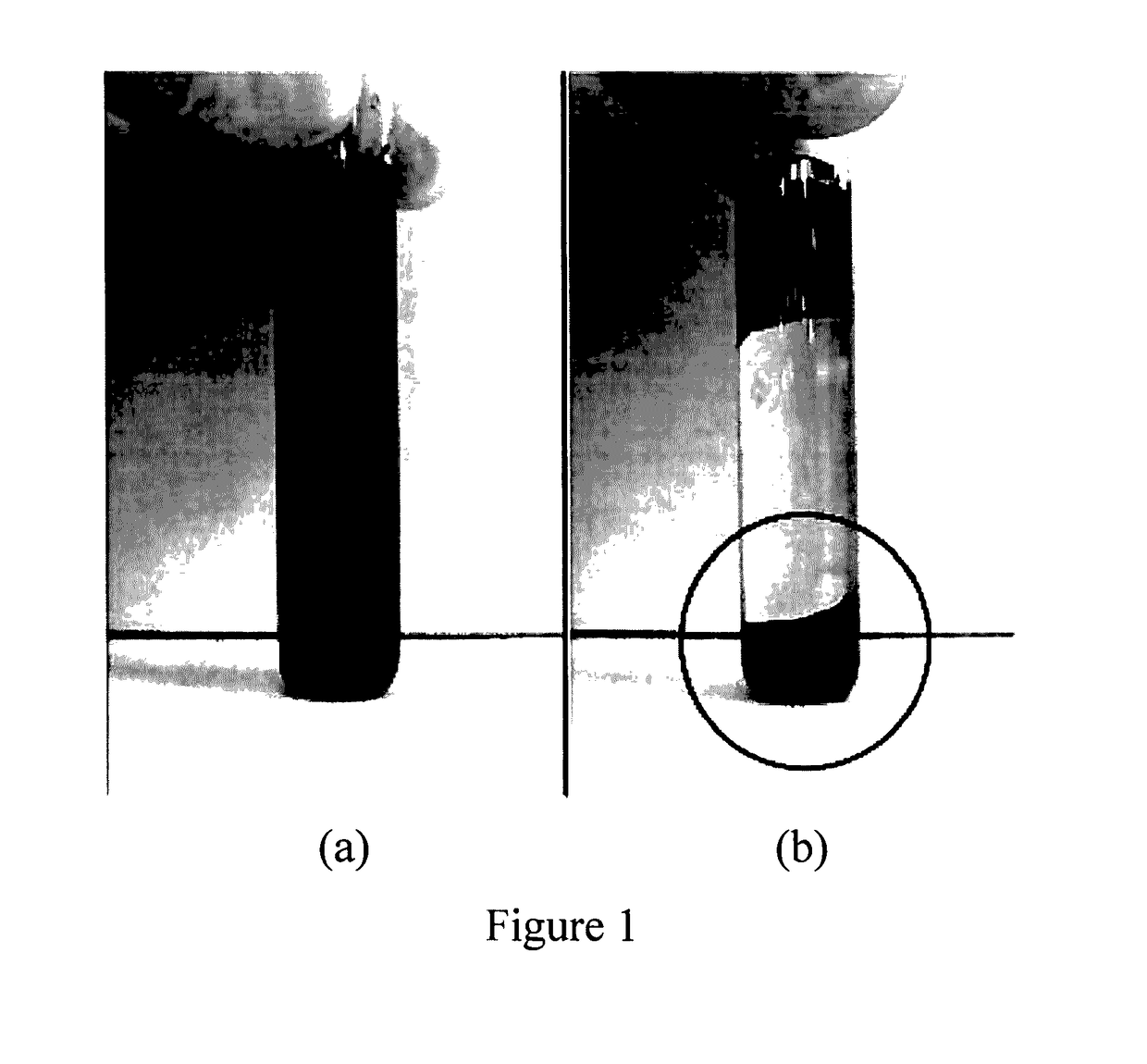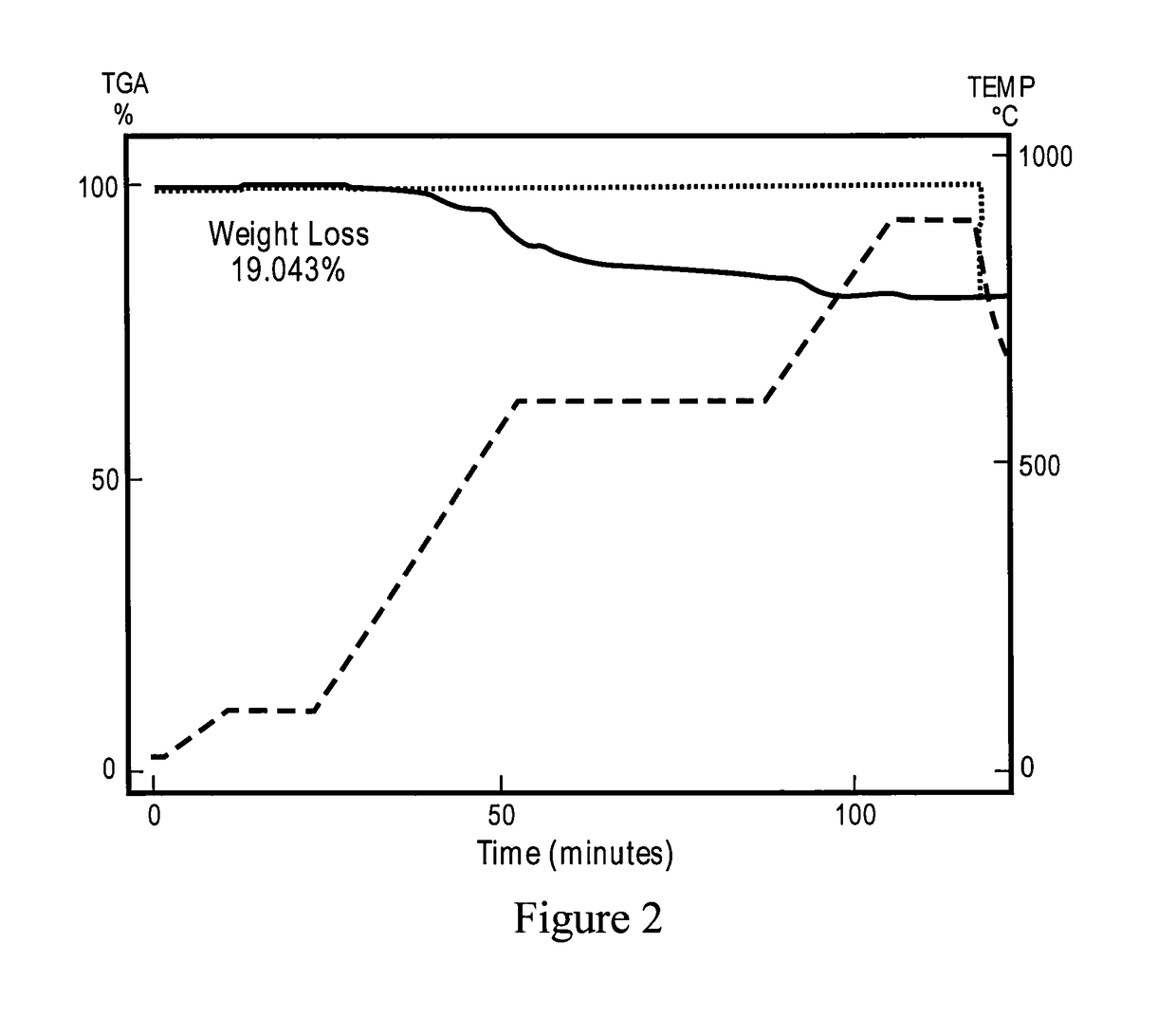Process for recycling electrode materials from lithium-ion batteries
a lithium-ion battery and electrode material technology, applied in the field of lithium-ion batteries, can solve the problems of difficult separation between the two, complex process, more difficult to sink, etc., and achieve the effects of high throughput, efficient and low-cost collection, and high throughpu
- Summary
- Abstract
- Description
- Claims
- Application Information
AI Technical Summary
Benefits of technology
Problems solved by technology
Method used
Image
Examples
example 1
[0047]1) selecting bromoform as the high density liquid;
[0048]2) providing a powder mixture of LiCoO2 cathode material and a graphitic anode material, each with some PVDF contaminant, from a Li-ion battery, and the particle size range of the mixture is 5-50 μm;
[0049]3) mixing the powder mixture with the high density liquid in a mass ratio of 1:10 in a vessel to create a slurry;
[0050]4) placing the vessel into a centrifuge and running the centrifuge to allow the slurry to separate to three layers according to density difference, please see FIG. (b),—with the top layer containing mostly anode material, the bottom layer (the circled layer) containing mostly cathode material, with a clear bromoform layer in-between, which is greatly different than (a) showing the slurry before being centrifuged;
[0051]5) collecting the solid phases in different layers by filtration and rinsing with acetone, and then drying them.
[0052]TGA analysis of the bottom layer (as shown in FIG. 2), containing predo...
example 2
[0059]1) selecting aqueous lithium metatungstate (in a concentration of ˜75 wt %, and with a density of ˜2.6 g / cc) as the high density liquid;
[0060]2) providing a powder mixture of LiNiCoMnO2 cathode material and a graphitic anode material, each with some PVDF contaminant, from a Li-ion battery, and the particle size range of the mixture is 5-100 μm;
[0061]3) mixing the powder mixture with the high density liquid in a ratio of 1:15 in a vessel to create a slurry;
[0062]4) allowing the vessel to sit undisturbed, and the slurry to separate into three layers according to density difference—the top layer containing mostly anode material, and the bottom layer containing mostly cathode material, with a clear aqueous lithium metatungstate layer in-between;
[0063]5) collecting the solid phases in different layers by filtration and rinsing with de-ionized water, and then drying them.
[0064]TGA analysis (without showing the figure) of the bottom layer, containing predominantly cathode material, s...
PUM
| Property | Measurement | Unit |
|---|---|---|
| density | aaaaa | aaaaa |
| density | aaaaa | aaaaa |
| particle size | aaaaa | aaaaa |
Abstract
Description
Claims
Application Information
 Login to View More
Login to View More - R&D
- Intellectual Property
- Life Sciences
- Materials
- Tech Scout
- Unparalleled Data Quality
- Higher Quality Content
- 60% Fewer Hallucinations
Browse by: Latest US Patents, China's latest patents, Technical Efficacy Thesaurus, Application Domain, Technology Topic, Popular Technical Reports.
© 2025 PatSnap. All rights reserved.Legal|Privacy policy|Modern Slavery Act Transparency Statement|Sitemap|About US| Contact US: help@patsnap.com



